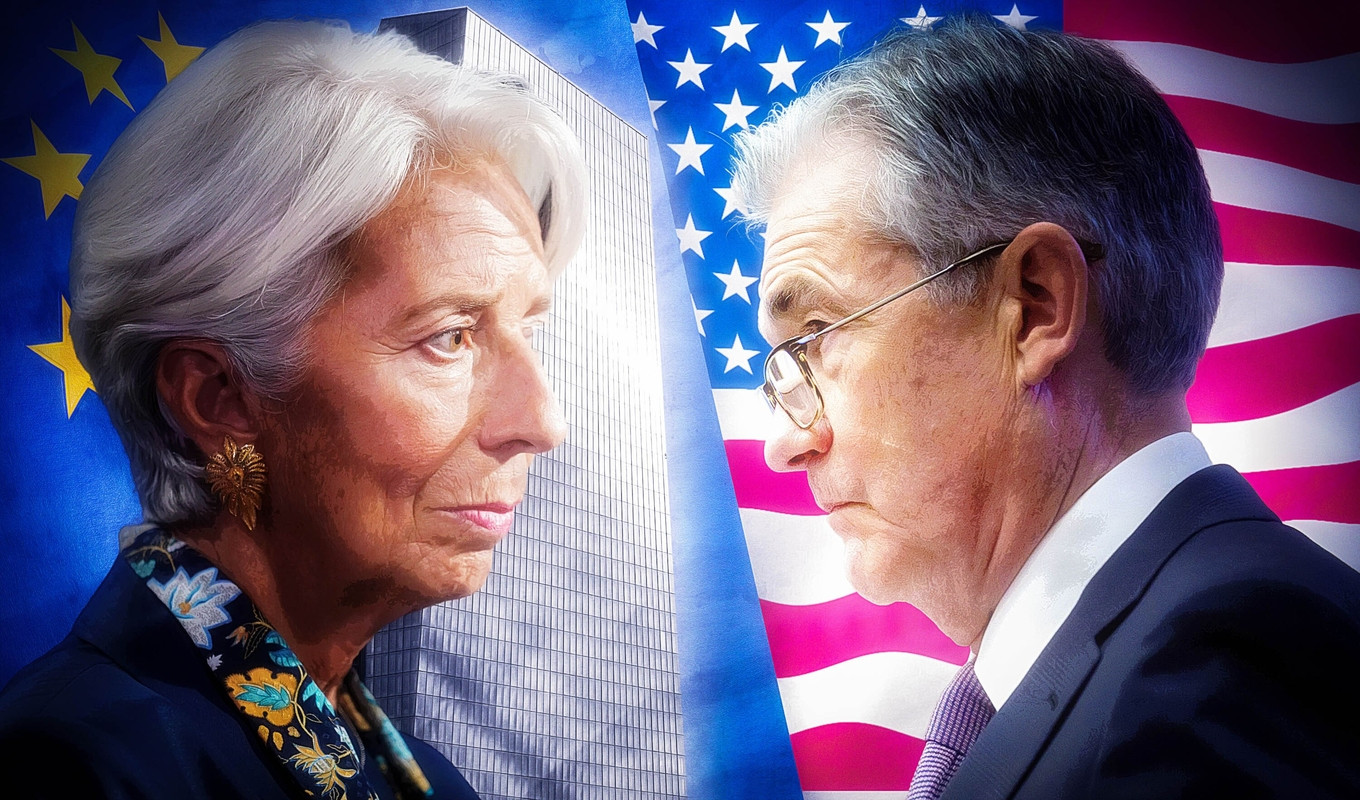
The euro plummeted despite another rate hike in the EU, while the dollar rose even on expectations of a pause in the current Fed tightening cycle. Is this a paradox, or a logical outcome? Let's discuss what pressures the European currency and why the greenback is gaining ground.
ECB trying to find the balance
Yesterday, the European Central Bank (ECB) raised its base interest rate by 0.25% for the tenth consecutive time, bringing it to 4.5%.
Despite this hawkish move, the euro sharply declined against its major competitor, the US dollar. Post-ECB meeting, the EUR/USD pair plummeted to a 6-month low of 1.0632.

The pressure on the euro came primarily from ECB President Christine Lagarde's rather ambiguous rhetoric. She didn't provide a clear answer to the market's most burning question: has the EU reached its peak interest rate?
However, in the official ECB statement, investors seemingly found what they were searching for. The statement explicitly mentioned that the ECB's key interest rates "have already reached levels that, when maintained over an extended period, will contribute significantly to the timely return of inflation to its target."
This dovish note, combined with Lagarde's anxious tone regarding the Eurozone's economic prospects, had its desired effect. Currently, traders believe the ECB has concluded its rate hikes and anticipate a rate drop of around 70 basis points next year.
Futures markets predict that the ECB will reverse its monetary stance by June. Until then, the central bank will likely maintain high rates, hoping to suppress stubborn inflation.
The main risk is whether the ECB can retain its hawkish stance in what Lagarde labeled as "challenging times". She acknowledged that the EU's economic growth would be "very, very sluggish," confirming the ECB's forecast of weak economic momentum until the end of 2023.
According to ECB reports, the economy is stabilizing. Still, European officials anticipate a mere 0.1% growth in the last quarter of the year. With such sluggish growth, the Eurozone could easily slide into recession.
Speaking to journalists, Lagarde stated that the ECB doesn't intend to provoke economic stagnation but aims for price stability. This comment captures the regulator's dilemma and essentially answers the trader's main concern.
The ECB is unlikely to put at risk an already fragile economy. The most optimal strategy for the central bank would be to halt further tightening but continue to maintain high rates. The market now clearly understands this narrative.
Fed unlikely to signal a dovish turn
After the resonant ECB meeting, the attention of currency traders has shifted to the Fed's decision on interest rates. It is expected that the US regulator will deliver its verdict next week, on September 20.
At present, investors have little doubt that the Federal Reserve will not tighten monetary conditions this month. The futures market evaluates the likelihood of a pause at 96%.
This perspective is shared by a majority of analysts. Experts believe that there is no urgent need for the regulator to accelerate tightening given that the recent inflation report indicated a significant slowdown in the core CPI. Last month, the index declined from 4.7% to 4.3%, signifying a strong disinflationary trend.
However, the prospect of a pause in US tightening is not alarming dollar bulls. Recently, the US dollar index increased by 0.64%, reaching 105.41, its highest level since March this year.
According to currency strategists, the primary driver for USD is traders' hope for continued rate hikes in the US this year.
Investors cannot completely rule out such a scenario since the country's core inflation still exceeds the Fed's target by more than twice. Furthermore, overall annual inflation showed an unexpected acceleration in August, surging from 3.2% to 3.7%.
All these factors fuel market expectations regarding hawkish rhetoric from the Fed Chair during the Federal Reserve's September meeting. Many experts believe that next week Jerome Powell will refrain from signaling that the regulator has finished hiking rates.
"There's no point for the Fed Chair to talk about ending the anti-inflation campaign at this stage. Given that rates will remain unchanged in September, it would be best for Powell to hint at the possibility of another rate hike," noted economist Derek Tan at LH Meyer/Monetary Policy Analytics.
A similar viewpoint was expressed by his colleague from J.P. Morgan, Bruce Kasman. Kasman is convinced that Powell will definitely not indicate an end to tightening as long as inflation remains sticky and the economy continues to demonstrate strength.
Additionally, Kasman speculated that the hawkish majority would persist within the ranks of the US Central Bank. In his opinion, the dot plot of forecasts, set to be published after the FOMC meeting, will again indicate a further rate increase.
If Fed officials keep the door open for another round of tightening in November or December, it could lead to an even stronger appreciation of the dollar against its competitors. The euro is the most at risk in this situation. The fact that the ECB and the Fed are moving in opposite directions could send the EUR/USD pair into free fall.
EUR/USD nearing parity?
"The shift in market forecasts regarding the ECB's monetary policy towards a more dovish stance has strengthened our view on the continued decline of the EUR/USD pair," wrote currency analysts from HSBC after yesterday's meeting of the European regulator.
Experts anticipate the euro to weaken against the dollar to 1.02 by the middle of next year and do not rule out the risk of the EUR/USD major approaching parity.
"The distance to parity is currently 6%. Yes, it's significant, but still possible to reach. If the ECB starts signaling rate cuts, and the Fed continues to emphasize the need to keep rates high, it could again bring the euro close to dangerous levels," stated analyst Jamie McGeever.
 English
English 
 Русский
Русский Bahasa Indonesia
Bahasa Indonesia Bahasa Malay
Bahasa Malay ไทย
ไทย Español
Español Deutsch
Deutsch Български
Български Français
Français Tiếng Việt
Tiếng Việt 中文
中文 বাংলা
বাংলা हिन्दी
हिन्दी Čeština
Čeština Українська
Українська Română
Română

